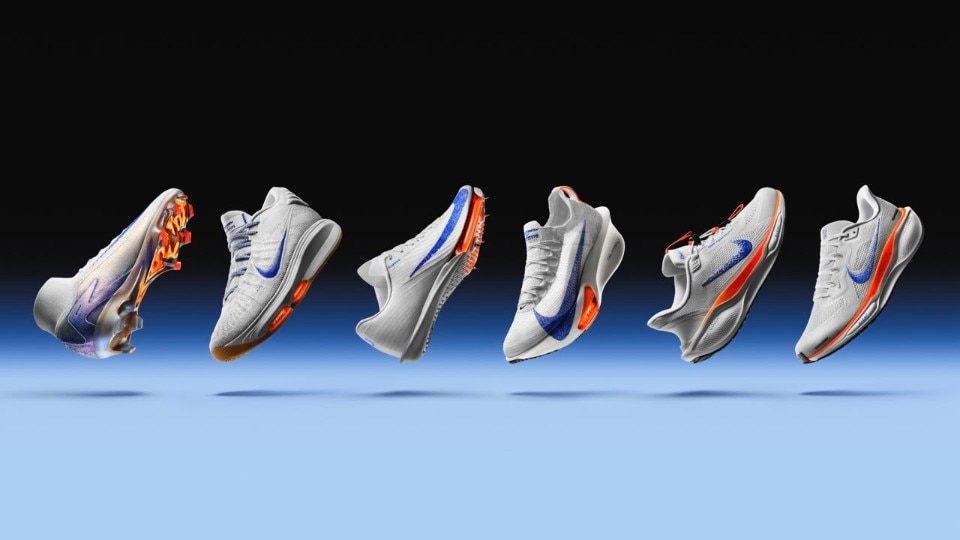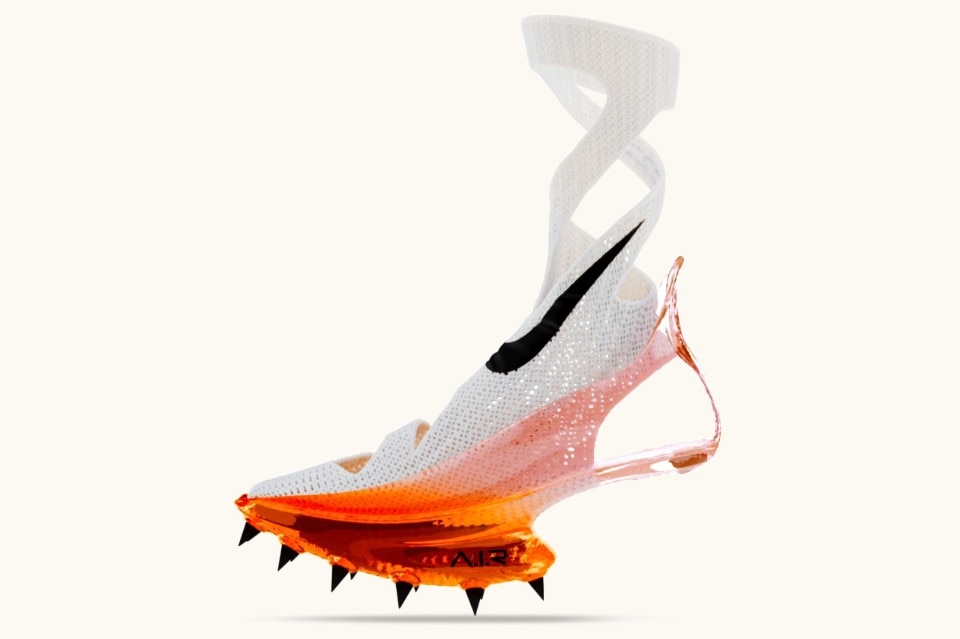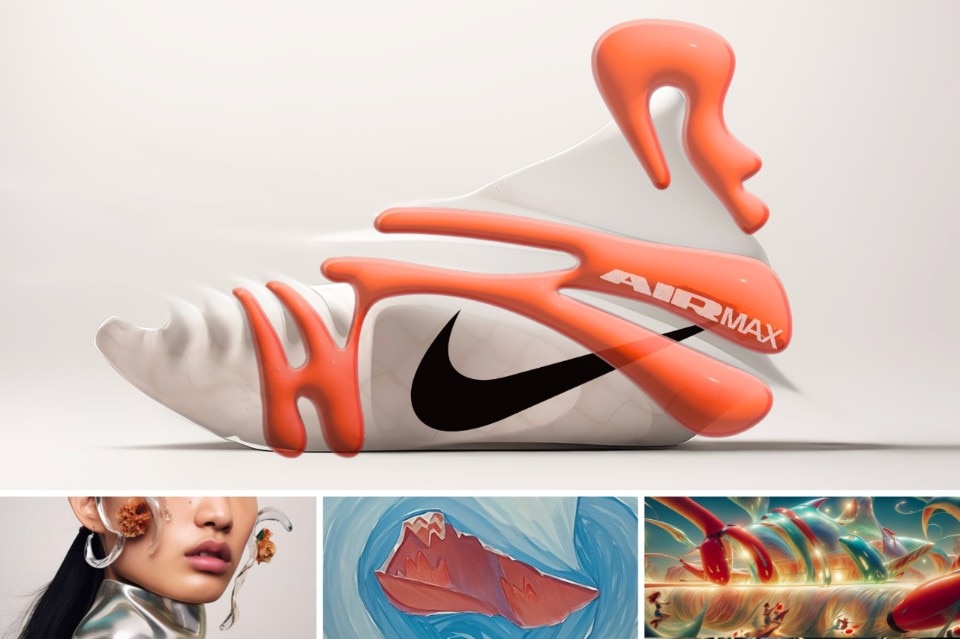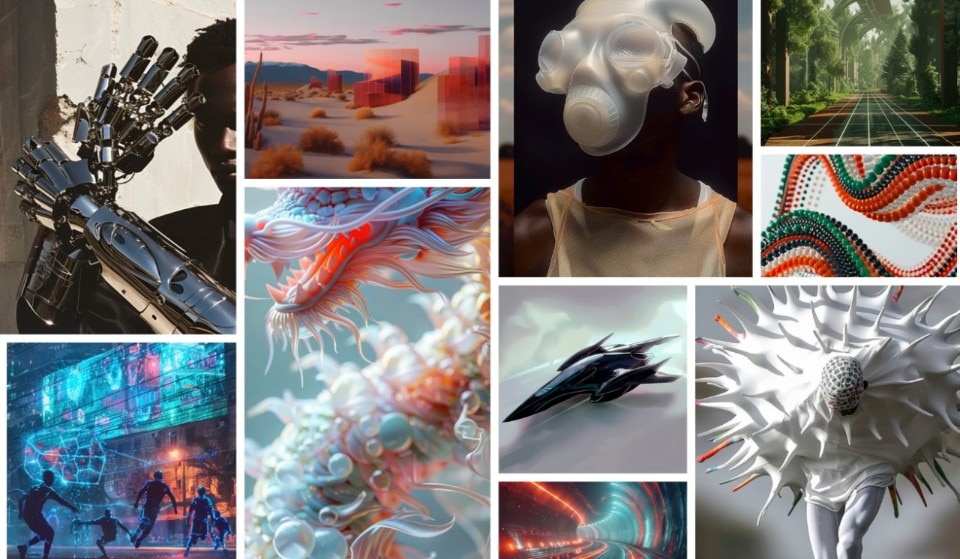To ilustrate the importance of computational design in Nike’s processes, Roger Chen, Vice President of NXT Digital Product Creation, starts from parametric architecture. This design approach uses algorithms and machine automation to unleash human creativity to its full potential. Citing the revered names of Zaha Hadid and Frank Gehry, Chen explains how their imaginative yet functional creations have influenced not only the architects of the new century but also the designs we wear on our bodies – and on our feet. What may have started as a “crazy sketch” by Gehry or Hadid is transformed, through data science and algorithmic precision, into the geometry that drives athletes to record-breaking performance.

The Nike Zoom Air Freak 1 was born from Greek-Nigerian NBA star Giannis Antetokounmpo’s tribute to his family. The design features a pattern of three roses on the sole, a flower cherished by his late father, Charles. This bond is reaffirmed by a tiny inscription on the bottom of the shoe, “I am my father’s legacy,” with the names of the Greek Freak’s four brothers listed near the heel. This meticulous “pixelated” precision, as Chen calls it, also appears in the pattern of roses on the sole, echoing the parametric “hand” seen in the perforated dress worn by Belarusian tennis player Aryna Sabalenka at the US Open last year, her first “custom” Nike garment.
This coral-colored dress with an asymmetrical skirt has been celebrated for its visionary boldness, featuring futuristic patterns with many openings designed with “stitch-by-stitch” precision. Computational design also played a key role in the Blueprint Pack, a collection of 13 shoes created for the upcoming hot summer of sports in Paris, inspired by Nike co-founder Bill Bowerman (we talked about it here with the swoosh’s Chief Design Officer, Martin Lotti).

Nike’s Digital Renaissance
Computational design, using big data, generative algorithms, and parametric modeling through cutting-edge software, is enabling the creation of increasingly powerful products and allows for storytelling within the artifacts themselves, a concept unimaginable just a few years ago. “When you look at the complexity of our products, there’s no way a designer can do that all in their head alone,” Chen confides, not hiding his pride in the accomplishment.
At the root of this “digital renaissance,” as Chen calls it, is John Hoke, now Nike’s head of innovation. Trained as an architect, Hoke led the design department in Beaverton from 2017 to 2023, applying lessons learned from the “great architects who pushed the boundaries of design.”
There’s no way a designer can do that all in their head alone
Roger Chen, Nike VP NXT Digital Product Creation
Meanwhile, a MacBook appears on the table in the small room where I meet Roger Chen. With a background in technology and design, he describes himself as a “pseudo-architect” and mentions his passion for Domus: “I read you all the time.” On the screen, he shows how Nike collects and uses information in the design phase, starting with physiological data like temperature and perspiration. Examples of apparel created directly on a digital avatar calibrated through motion capture change texture and details in real time without compromising functionality. “As far as I know, we are the only ones doing this. Everyone else is still using static mannequins.”
But data alone, warns Chen, is not enough. The quantitative method is supported by the qualitative. Nike needs, and will always need, feedback from athletes – from Olympic-level athletes to amateurs. “By using data and stories together, we can unlock new insights and design in new ways.”
Nike and Artificial Intelligence
As part of the launch of the Blueprint Collection ahead of Paris 2024, Nike unveiled A.I.R., a speculative project featuring 13 styles of footwear created using artificial intelligence for elite athletes, from Spurs phenom Victor Wembanyama to U.S. sprinter Sha’Carri Richardson to French national soccer team captain Kylian Mbappé.

Nike shoes have always been a product, an accessory, a fashion item; they have a cultural, athletic, and obvious connection to the brand’s history, Andy Caine, VP of Footwear Design, tells Domus. “It is an object that has to be created by mixing all these elements,” he says: and using the new technologies available, which require increasingly skilled, educated, and passionate designers. According to Caine, the role of the designer is evolving rapidly and now requires a strong curatorial sense, diverse skills, and extensive knowledge. Future designers will need to make choices even before they start drawing or designing.
“Building a new DNA of the future while respecting the DNA of Nike in the past is where curation becomes a strong interplay,” Caine says. Especially when the most disruptive element creativity has encountered in decades comes into play: artificial intelligence. How is it being used at Nike? “In a way that is probably different from how many others are using it,” which is with a closed system, Caine explains. Nike’s philosophy is clear. “We use AI to create the image, and from there we start exploring,” without relying on external sources or images found online and reworked with generative AI, as is common today. “If you have a vision, you can create the image yourself.”
Building a new DNA of the future while respecting the DNA of Nike in the past is where curation becomes a really strong interplay
Andy Caine, Vp Footwear Design
Caine’s background as a gamer (and an amateur athlete at the national level in the US) makes him a valuable interlocutor when it comes to issues such as kitbashing and the use of modded software versions. At Nike, they also use internally developed software. A key aspect highlighted in his heartfelt discussion with Domus is the critical significance of Nike’s digital footwear archive – virtualizing key models previously kept only in physical versions, and integrating prototypes that do not end up on the shelves. This archive serves as a reference for future design and for training AI to grasp the essence of Nike's identity and legacy.
The designer as a curator
The designer of the near future, working with AI at their side, will need “curator-like” skills and sensibilities. They will face 200 shapes and “have to choose the right one to work on,” explains Andy Caine, smiling at how his craft has evolved and will continue to change. “When I started designing, people used pens, pencils, markers. Now, in addition to those, there are computers, 3D models, and 3D printers. And artificial intelligence.”

People often talk about intelligent machines gradually replacing human work. For VP Nike, however, the machine will never replace human intelligence. It will be a tool, an enhancement, an “augmentation,” as he calls it. “We will probably see a human-centric world with augmented creativity through procedural AI tools,” he predicts. “It’s one of the best times to be creative since I’ve been on this planet,” he concludes, with great optimism. It is impossible to expect anything less from Caine, whose words radiate the kind of enthusiasm for the future that comes from someone fortunate enough to see it from a particularly privileged perspective: a company that has made innovation its weapon of choice. Time and again.
All images courtesy Nike


